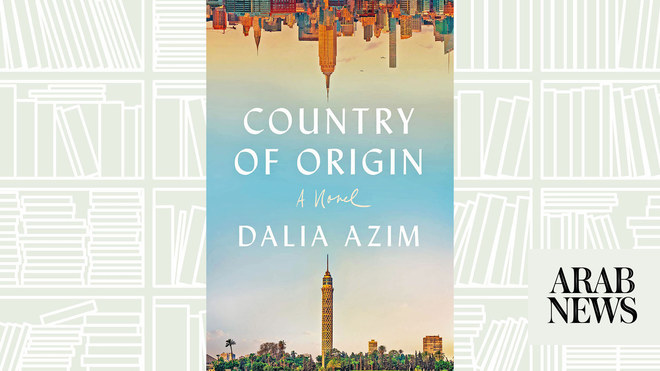
first encountered Noughts + Crosses, Malorie Blackman’s novel about an interracial relationship in a black supremacist version of England named Albion, through a 2007 Royal Shakespeare Company adaptation. The set was modest and sparse, and the costumes humble, whether you were a member of the ruling class of black Crosses or one of the subordinate white Noughts. All that stood out were the actors’ faces, as though the production intended to draw attention to race above all else. But Noughts + Crosses isn’t about race – the idea that skin colourdoes and should carry social consequences. It’s about racism – the system of power that allows a demonstrably false myth like race to govern reality.
Landing almost 20 years after the book was first published, the BBC adaptation understands this nuance and exposes power in every shot. African statues rise up among skyscrapers, black faces adorn billboard adverts and white household staff wear dowdy versions of typically vivid African prints – all of which renders Noughts and their culture invisible and powerless. Even acts of kindness are poisoned by inequality; Sephy is magnanimous when she orders a guard to allow parents of a child hospitalised by police brutality to sit by his bedside, but she’s only able to do this because she’s a member of the ruling race, making an act of well-meaning graciousness feel deeply uncomfortable. Episode one is a meticulous study of power and how it manifests through culture, institutions and relationships.
At last, Noughts & Crosses shows us a world in which racial politics are inverted
Candice Carty-Williams
Read more
The modern retelling is also precise in who it names as wielders of power. The Crosses we get to know are wealthy, connected ones. They are politicians with children who are educated at elite institutions that demand loyalty to the oppressive status quo (even the few Noughts who enter the Sandhurst-esque Mercy Point military school are challenged on their loyalty to Cross supremacy). Crosses aren’t all wealthy – there would be no need for a poster warning against interracial hand-holding on the bus if only Noughts used public transport – but the focus on Crosses with cultural, political and economic capital reminds us that, when it comes to perpetuating racism as a system of power, it’s really only those at the top within the dominant racial group who are in the driving seat.
Scene from Noughts + Crosses.
Facebook Twitter Pinterest
‘The few Noughts who enter the Sandhurst-esque Mercy Point military school are challenged on their loyalty to Cross supremacy.’ Photograph: Ilze Kitshoff/BBC/Mammoth Screen
Noughts + Crosses reveals a world where a white underclass is in conflict with a specific subset of ruling black people. This is in stark contrast with the real world, not just because it is whiteness that dominates in reality, but because we discuss racism in a much clumsier way. We flatten diverse experiences into identity buzzwords such as “BAME”. White working-class people (“average Brits”, “traditional Labour voters”) are told they are being attacked when people of colour criticise institutions and practices that are often just as classist as they are racist.
The right insists we have a debate on race realism – the idea that there are meaningful genetic differences between races – as though the idea wasn’t debunked decades ago by the scientific community (and debunked by reality much earlier still). And when working-class white boys do badly in education they’re compared with black boys who are scarcely an inch ahead, rather than the economically privileged white boys – making clear who our society believes is in competition, poor people whatever their race – and what is considered the acceptable natural order of things, a ruling white elite.
Noughts + Crosses review – reverse-race love story is vital viewing
4 out of 5 stars.
Read more
Because it inverts the racial totem pole, Noughts + Crosses’ visual language is alien to most British viewers – the prime minister, Opal Folami, leading a cabinet in recognisably African clothes is an unfamiliar sight to a country that has had only white prime ministers and politicians of colour who wear predominantly western clothes. Victimised Noughts, however, feel very familiar; while the black cultural domination required for the former to take place in the real UK is just a myth put about by nervous racists, our reality does produce marginalised white people like those in Albion, even if they aren’t marginalised because of their race.
Advertisement
There are differences in how black and poorer white people experience oppression, and Noughts + Crosses is full of allusions to the specific realities of being a racialised minority – dark plasters on pink skin is just the start. But by building a whole world on the logic of African supremacy, and showing how it produces conditions for white people that are so similar to poor white people in the real world, Noughts + Crosses posits that, not only is race a myth, but a society based on believing in racial supremacy inevitably produces marginalised white people, no matter what culture is dominant. What’s more, it highlights the challenges that working-class white people and people of colour share in the real world. Noughts + Crosses was partly inspired by Stephen Lawrence’s murder and how it was handled by a racist police force, but it’s worth remembering that just four years before he died, police classism inflicted misery on the families of Hillsborough victims.
That’s the message viewers should take from this series, not that it’s “anti-white” as some have claimed. Compare the real world to Noughts + Crosses and you’re reminded that “white working class” and “people of colour” are meaningless divisions when both groups are marginalised by the same status quo. As politicians and pundits continue to sow division between poorer white people and people of colour, Noughts + Crosses’ story has much to contribute, even 20 years after it was first published.
• Josh Lee is a writer and journalist focusing on diversity and equality in LGBTQ+ culture












